
Koffiefontein
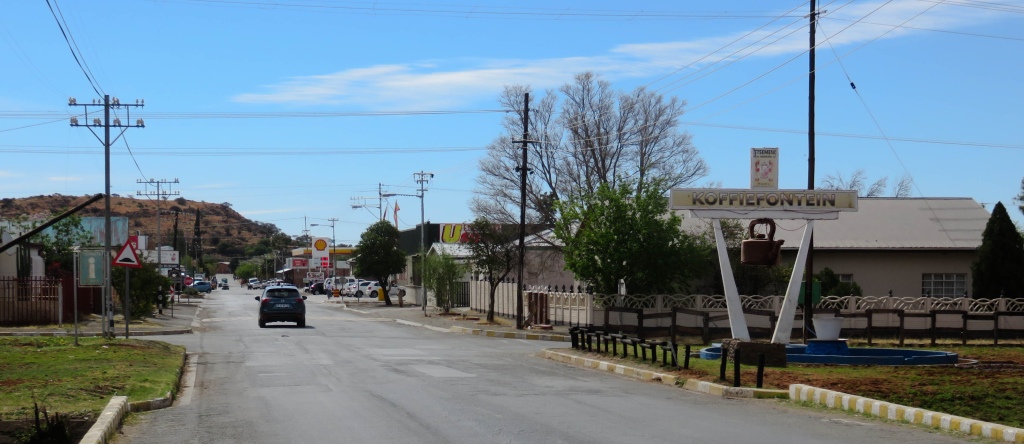 'Don't leave your cars unattended', those were the first words we heart when we decided to stop and see what this town is all about. Apparently there is a crime problem in the town most likely due to very high unemployment. Apparently only a few weeks before the police station was attacked, two police officers killed and weapons stolen.
'Don't leave your cars unattended', those were the first words we heart when we decided to stop and see what this town is all about. Apparently there is a crime problem in the town most likely due to very high unemployment. Apparently only a few weeks before the police station was attacked, two police officers killed and weapons stolen.
Koffiefontein is a small town about 120 km south west of Bloemfontein, geo-position 29.4065°S, 25.0035°E and 1190 m amsl. Its main claim to fame is that diamonds are mined here.
History
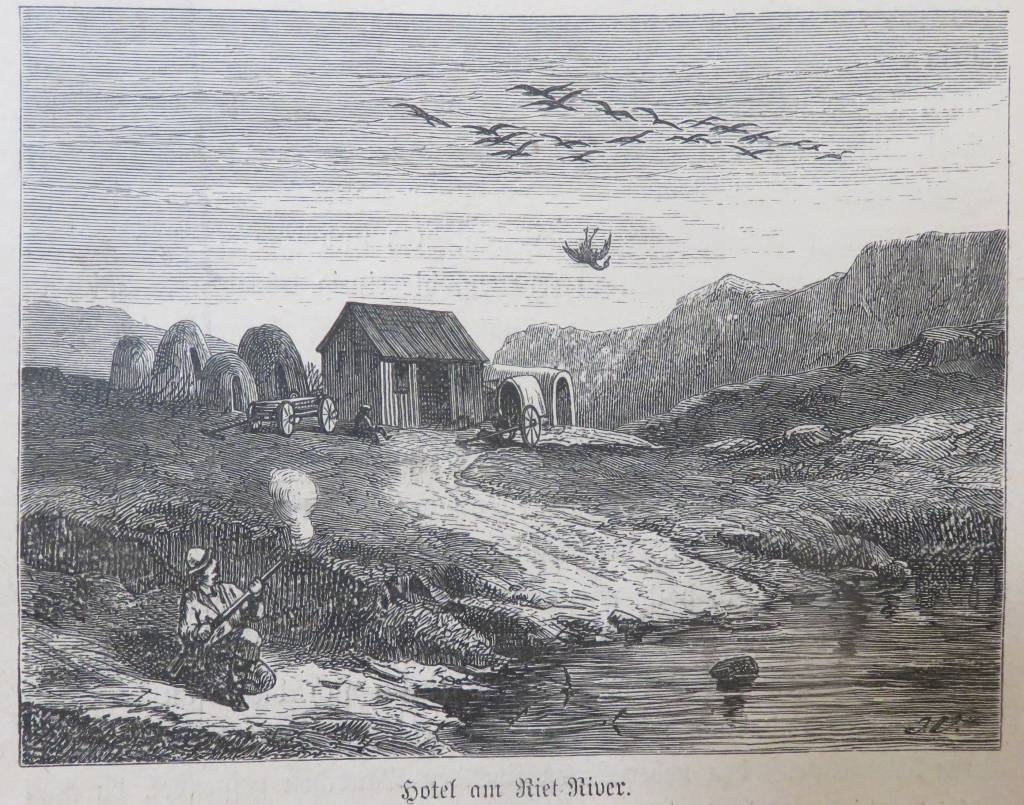 Emil Holub (Ref 2) was there, on his way from Port Elizabeth to the diamond fields (Kimberley) during winter 1872. He mentions in his book staying in a 'hotel' on the banks of the Riet river near Coffeefontein, see picture on the right. He didn't have good things to say about the 'hotel' he stayed for the night, about Coffeefontein he writes: 'Our path took took us through the valley of the Riet River past Coffeefontein. A diamond mine which is the second in the Free State after Jagersfontein near Fauresmith. Here mostly small, but beautiful white diamonds are extracted.'
Emil Holub (Ref 2) was there, on his way from Port Elizabeth to the diamond fields (Kimberley) during winter 1872. He mentions in his book staying in a 'hotel' on the banks of the Riet river near Coffeefontein, see picture on the right. He didn't have good things to say about the 'hotel' he stayed for the night, about Coffeefontein he writes: 'Our path took took us through the valley of the Riet River past Coffeefontein. A diamond mine which is the second in the Free State after Jagersfontein near Fauresmith. Here mostly small, but beautiful white diamonds are extracted.'
The story of the discovery of the first diamond is told on this website: Diamonds were first discovered in the area by a transport rider called Bam in July 1870. He was herding his oxen up the hill for better grazing when he came upon this shiny stone. In camp it was confirmed that that was a diamond.
The origins of the name is not certain, it is thought that it relates to the fountain at which many transport riders used to stop and brewed some traditional coffee. The farm had been named Koffeefontein well before the town was established. And typical, the more you look the more you find. Ref 3 contains a different version of the naming event. Apparently there is a document from 1840 wherein the leader of the Griqua tribe, Klaas Kok, who controlled the area at the time, signed a document giving BJ Engelbrecht the occupation right for 40 years. The name of the farm was given as 'Koffie von teyn'. This version makes sense since it is based on a document of the time.
With fortune seekers coming to the area a diggers camp was established which later developed into a town. The town was proclaimed in 1892.
Entrance to the town
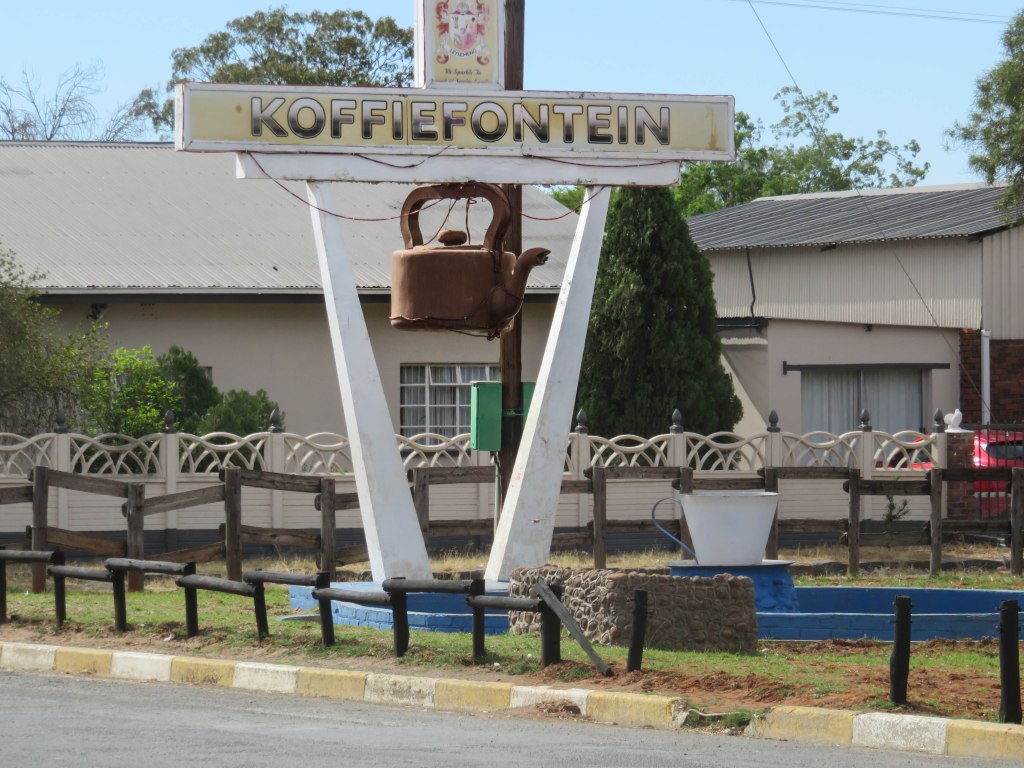 I am picking this as a heading because a lot of the town's history is depicted there with various exibits. The picture on the left shows the coffee pot hanging under the town name. It is actually an installation, when the system is working water is spouting out from the pot into the fountain, all very symbolic of how the town got its name.
I am picking this as a heading because a lot of the town's history is depicted there with various exibits. The picture on the left shows the coffee pot hanging under the town name. It is actually an installation, when the system is working water is spouting out from the pot into the fountain, all very symbolic of how the town got its name.
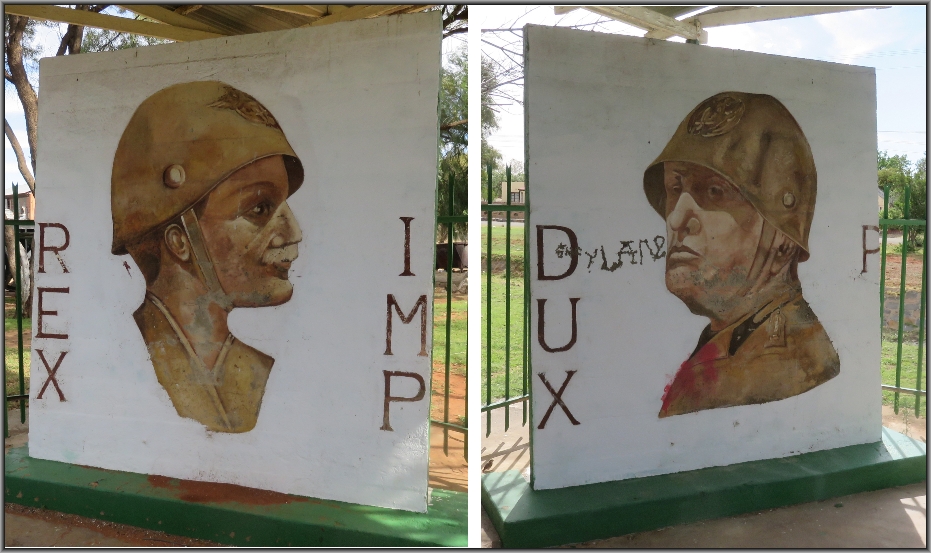 Two murals go back to the time during the second world war when about 2000 Italian prisoners of war were in a camp here at Koffiefontein. The pictures depict Victor Emmanuel on the left, the king of Italy at the time, and on the right is Benito Mussolini, who needs no introduction.
Two murals go back to the time during the second world war when about 2000 Italian prisoners of war were in a camp here at Koffiefontein. The pictures depict Victor Emmanuel on the left, the king of Italy at the time, and on the right is Benito Mussolini, who needs no introduction.
This was also the site of a political internment camp for German nationals and Nazi sympathizers, such as the Ossewabrandwag organisation. John Voster, the Prime Minister of the republic 1966 to 1978, was interned here.
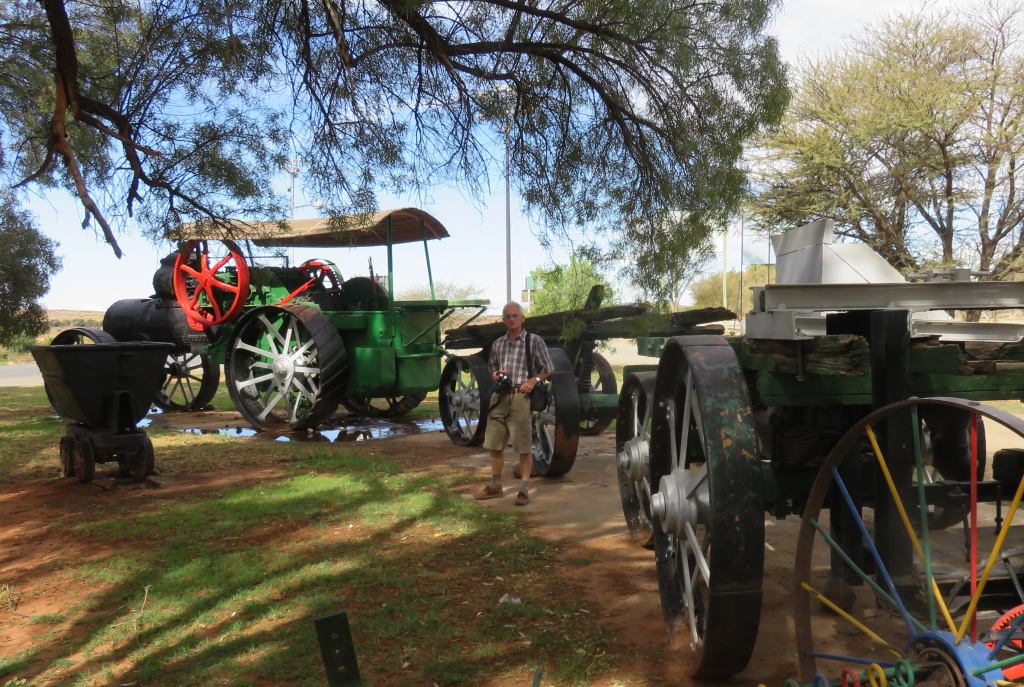 Very prominent at the entrance is the steam tractor train. I presume it was used in the mine, the first one arrived there in the 1890th, this specific one is from 1906. There are some other exhibits related to the water supply, such as a hand pump, a water dispenser, the foundation stone of the water works and some other piece of equipment which I was unable to identify.
Very prominent at the entrance is the steam tractor train. I presume it was used in the mine, the first one arrived there in the 1890th, this specific one is from 1906. There are some other exhibits related to the water supply, such as a hand pump, a water dispenser, the foundation stone of the water works and some other piece of equipment which I was unable to identify.
Churches
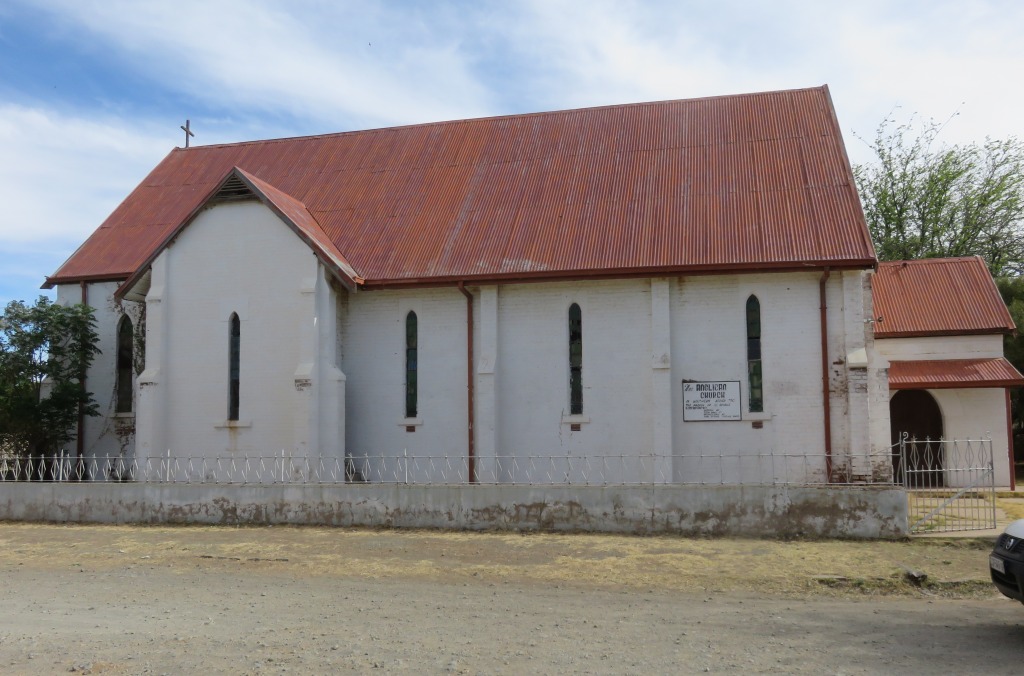 The first church we got to was this one, the Anglican Church. It is not in use, badly neglected and the surrounding covered in rubbish. The Foundation stone reads: 'To the Glory of God; and the Memory of; S.Mark; this stone was laid by; DR Chandler; Lord Bishop of Bloemfontein; 18th June 1906'.
The first church we got to was this one, the Anglican Church. It is not in use, badly neglected and the surrounding covered in rubbish. The Foundation stone reads: 'To the Glory of God; and the Memory of; S.Mark; this stone was laid by; DR Chandler; Lord Bishop of Bloemfontein; 18th June 1906'.
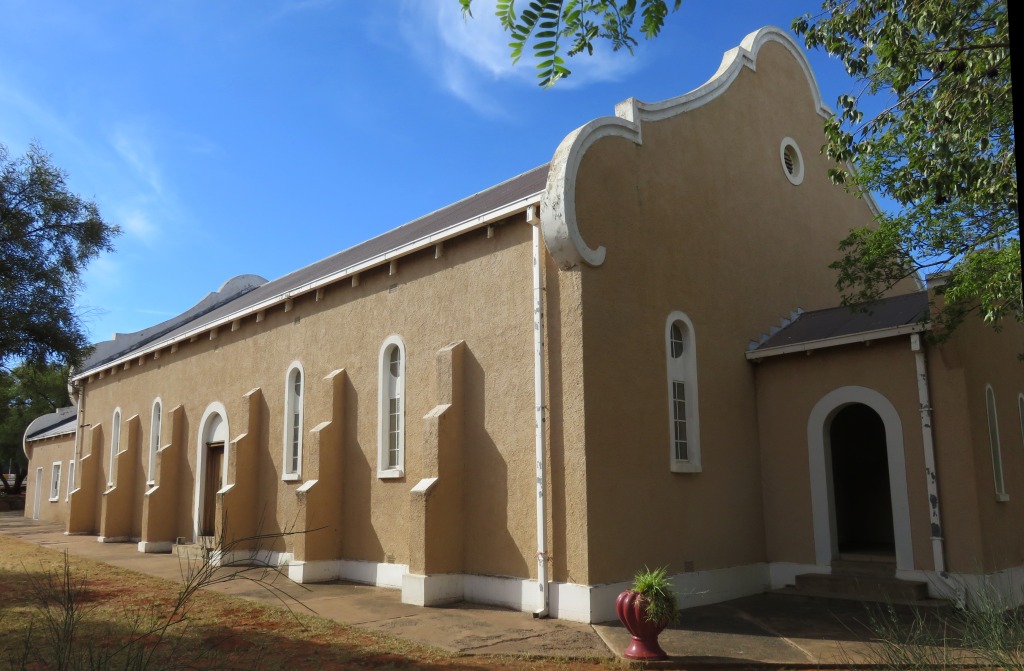
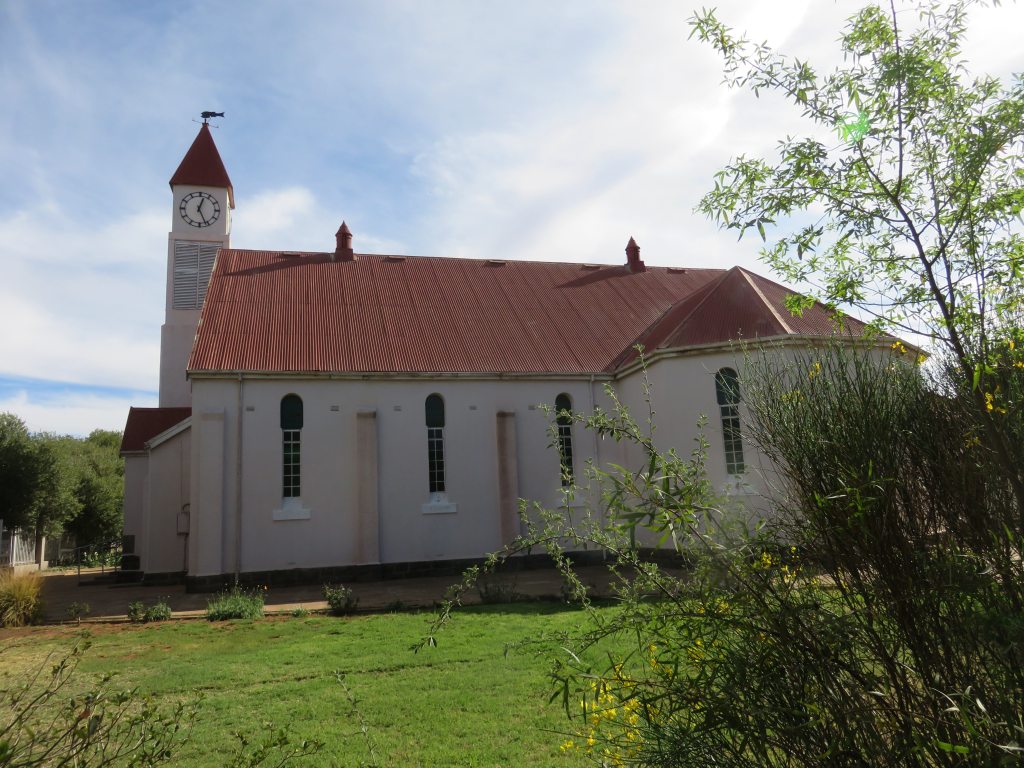 The other two churches I managed to take pictures of are the Gereformeerde Kerk (Reformed Church), left, and the Nederduits Gereformeerde Kerk (NG church) on the right. The congregation of the NG church came into being in 1904 after ceding from Fauresmith with an initial membership of about 350. In 1909 they laid the cornerstone of the new church. Most of the information I got from this website.
The Reformed church commenced in 1925, they build their church in 1934. Something interesting I came across on the websites was that in 1933 there was some problem at the NG church and about 100 of their members changed over to the Reformed church. This was a major boost to the Gereformeerde Kerk, their numbers increased four-fold.
The other two churches I managed to take pictures of are the Gereformeerde Kerk (Reformed Church), left, and the Nederduits Gereformeerde Kerk (NG church) on the right. The congregation of the NG church came into being in 1904 after ceding from Fauresmith with an initial membership of about 350. In 1909 they laid the cornerstone of the new church. Most of the information I got from this website.
The Reformed church commenced in 1925, they build their church in 1934. Something interesting I came across on the websites was that in 1933 there was some problem at the NG church and about 100 of their members changed over to the Reformed church. This was a major boost to the Gereformeerde Kerk, their numbers increased four-fold.
the diamond mine
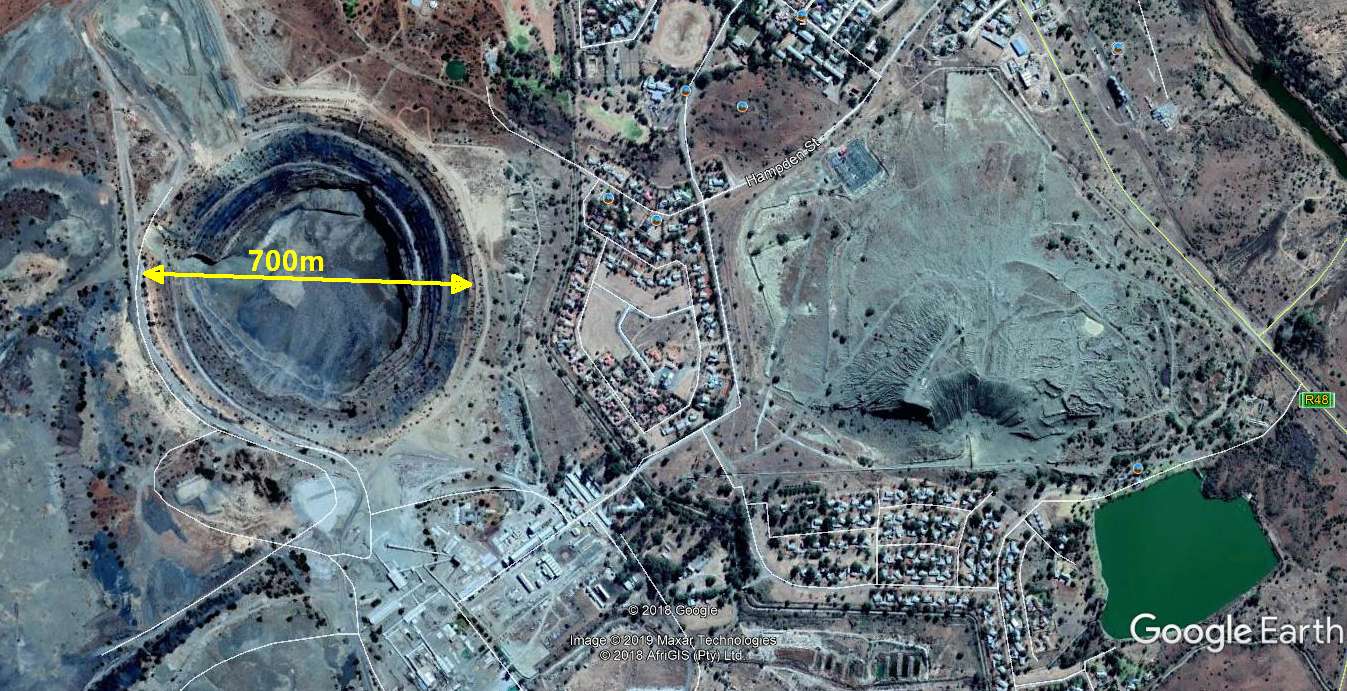 It was, apparently, a very chaotic start in 1870. The yield from the individual claims was on average meager with only a few claims making money. Proper mining started in 1887, with three companies sharing the harvest. By that time it had been established that geologically this was a diamond pipe. De Beers, the Diamond company, took over the whole pipe in 1911. They operated the open pit until 1981 and then went underground. The mine was sold to Petra Mining in 2007, it is still continuing to this day.
It was, apparently, a very chaotic start in 1870. The yield from the individual claims was on average meager with only a few claims making money. Proper mining started in 1887, with three companies sharing the harvest. By that time it had been established that geologically this was a diamond pipe. De Beers, the Diamond company, took over the whole pipe in 1911. They operated the open pit until 1981 and then went underground. The mine was sold to Petra Mining in 2007, it is still continuing to this day.
References
Ref 1.: Standard Encyclopedia of Southern Africa, Nasou Limited, 1974
Ref 2.: Emil Holub "Sieben Jahre in Süd-Afrika", subtitle: "Erlebnisse, Forschungen und Jagden auf meinen Reisen von den Diamantenfeldern zum Zambesi (1872-1879)", printed Wien 1881.
Ref 3.: PJ Nienaber, CJP le Roux, 'VRYSTAAT-FOKUS', CUM Boeke, 1982, ISBN 0869842161
Ref 4.: "Ons Kerk Album van Hollandsche Kerken en Leeraren", publisher: unknown, printed in the 1920's